As someone who’s explored Dalin (大林) on foot, believe me when I say you’d probably enjoy this township in the northernmost part of Chiayi County much more if you can get around it by bicycle.
The most interesting sights are a good distance apart. There’s not much traffic, which is a definite plus for both pedestrians and cyclists. But neither is there much shade — and that matters a lot at this time of year.
‘SLOW’ TOWN
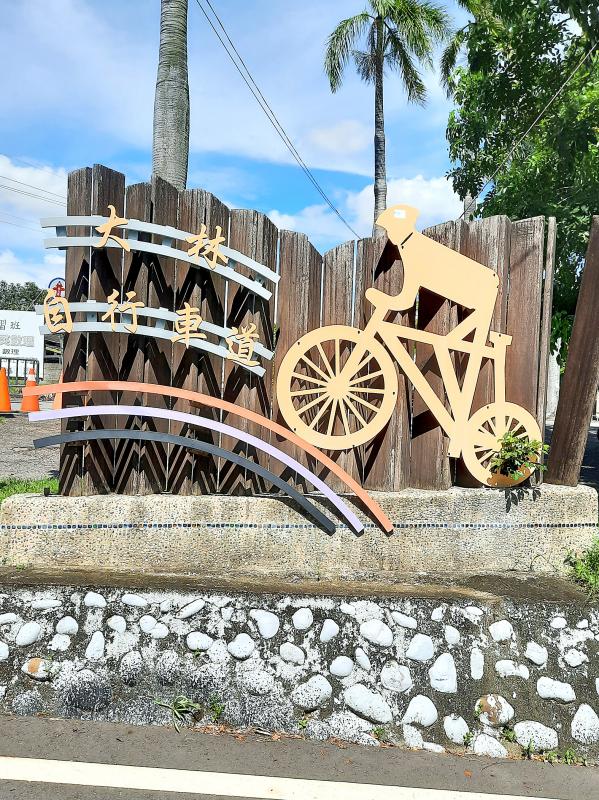
Photo: Steven Crook
Apropos there being few vehicles on the roads: Dalin is one of four towns in Taiwan that have been accepted as members of Cittaslow International. This Italy-based alliance grew out of the worldwide “Slow Movement.” of which slow food is probably the best known facet.
According to its Web site (www.cittaslow.org), the grouping aims to preserve and promote ways of life that are “respectful of citizens’ health, the authenticity of products and good food, rich [in] fascinating craft traditions” and which show respect for traditions “through the joy of slow and quiet living.”
Stepping out of Dalin Railway Station at 8:30am morning, I could feel the heat of the sun. After tramping westward for nearly 25 minutes, I saw the entrance to Minghua Wetlands Park (明華生態園區) on the other side Provincial Highway 1. (Motorists should look for the park on the seaward side of the road, just south the 253km marker.)
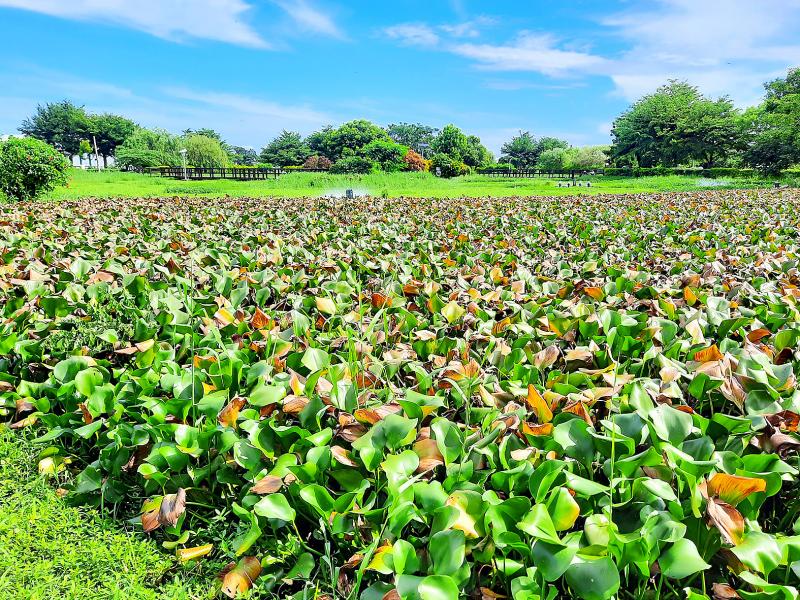
Photo: Steven Crook
The park was originally a poorly-maintained graveyard. In 2007, hoping to replace this eyesore with something more attractive, the Chiayi County Government applied for subsidies from the central government’s Environmental Protection Administration.
According to the county government’s Web site, the park was conceived, designed and completed in 22 months. That’s impressively fast for a public-sector project.
It was done quickly, and done well. The park, which is open around the clock and every day of the year, is a delight to wander through. The labeling of plants and trees goes beyond the usual Chinese and scientific names to include common English names.

Photo: Steven Crook
One of the most intriguing sights was a shrub I don’t think I’d ever seen before. The colors and shapes displayed by the Codiaeum variegatum, also known as the spiral-leaved croton, made me think of pitcher plants.
The wetland naturally filters and purifies up to 3,000 tonnes of wastewater per day, and the county government’s Web site says it has reduced pollution in the adjacent Sandie Creek (三疊溪) by 57 percent.
Knowing it’d take me over half an hour to walk to the next point of interest, I plotted a route that passed a supermarket, so I could dawdle in air-conditioned comfort and rehydrate with green tea before finishing the trek to Dalin Sugar Factory (大林糖廠), north of the downtown.
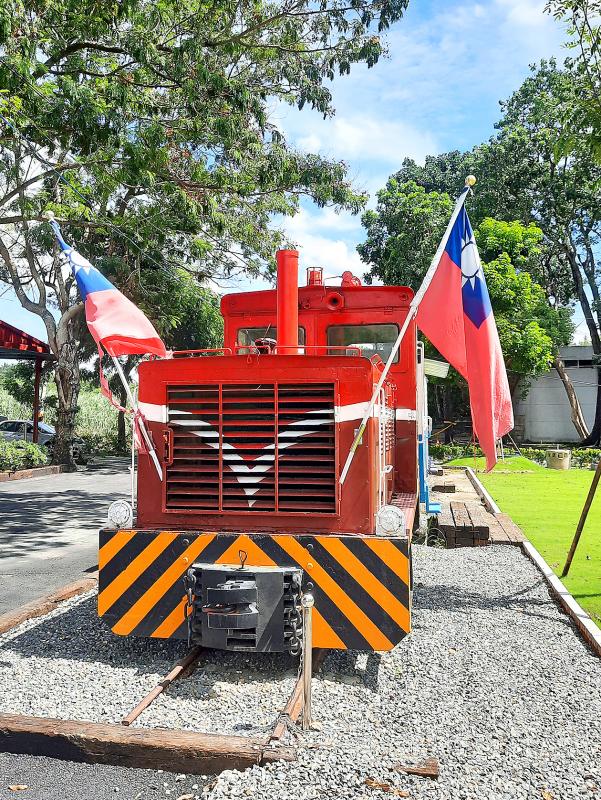
Photo: Steven Crook
DALIN SUGAR FACTORY
Unlike several other properties owned by Taiwan Sugar Corp (including one I wrote about in the Aug. 6, edition of this newspaper), there’s been little effort to turn Dalin Sugar Factory into a tourist attraction. The only exception is a carefully-landscaped plot that will, according to signs on-site, eventually function as a campground.
One part of the complex now houses Taiwan Sugar Corp’s Biotechnology Business Division. Other buildings, including the concrete-fronted but partly wooden Zhongshan Hall (中山堂), have been allowed to deteriorate. Even the statue of Sun Yat-sen (孫逸仙) looks neglected.
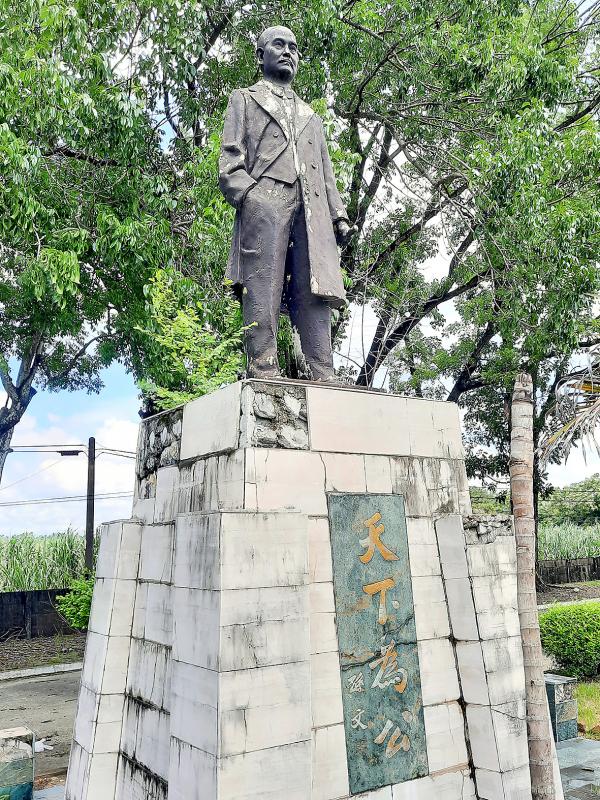
Photo: Steven Crook
Dalin Sugar Factory is one of the highlights of Dalin Bike Trail (大林自行車道), a 7km-long route that leads from the town’s junior high school into the countryside to the northeast. Some of it is a purpose-built, bicycle-only path. On other sections, you’ll have to watch out for cars and motorcycles.
Some locations near the bike trail are inhabited by the farmland green treefrog (Zhangixalus arvalis), a unique-to-Taiwan amphibian species only discovered in 1995.
Like other frogs, this species breeds during the warmer months. Sensitive to pollution, it’s been found no further north than Yunlin County, and no further south than Tainan City.
SITES OF INTEREST
Downtown Dalin isn’t so different to other Taiwanese towns. But if you’re here with a bit of time to kill, three sights justify walking a short distance from the railway station.
One is less than 100m north of the station’s entrance. The Station Master’s Dormitory (大林車站站長宿舍), built during the 1895-1945 period of Japanese rule, was rescued from dilapidation some years ago.
The dormitory has since served as an occasional exhibition space. Unfortunately, it was locked up when I visited, with no indication of when it might next open to the public.
If social media is anything to go by, few people are interested in the building’s interior. Instead, they come here to take photos of the adjacent Indian laburnum (Cassia fistula) trees when they’re flowering.
I had a similar experience at Wanguo Movie Theater (萬國戲院), at 21-7 Pinghe Street (平和街). The theater, which operated from 1968 to 1989, was renovated some years ago for the filming of period dramas and movies.
The building is also used as a venue for cultural seminars, performances and film nights. If you want to see inside, you’ll need to locate a schedule of upcoming events.
At least 63 Park (63公園) never closes. It isn’t a conventional city park, and it’s barely the size of a soccer pitch.
Located in the heart of an old neighborhood, accessed via and named for Lane 63, Jhongshan Road (中山路), 63 Park makes the most of the humble single-storey homes around it. It’s not just a green space that provides relief from concrete, brick and tile, but an arrangement that seems to “borrow scenery” in the classical Chinese/Japanese sense.
I wished I’d brought a book so I could sit there a while and read. And that, I think, is the whole point of a “slow town.”
If you go: Getting there
Dalin is served by at least two northbound and two southbound trains per hour between early morning and late evening. Few of them are express services, however. If you drive or ride to the town, you’ll find parking quite easy, except in the vicinity of 63 Park.
Steven Crook has been writing about travel, culture and business in Taiwan since 1996. He is the author of Taiwan: The Bradt Travel Guide and co-author of A Culinary History of Taipei: Beyond Pork and Ponlai.

Sept. 1 to Sept. 7 In 1899, Kozaburo Hirai became the first documented Japanese to wed a Taiwanese under colonial rule. The soldier was partly motivated by the government’s policy of assimilating the Taiwanese population through intermarriage. While his friends and family disapproved and even mocked him, the marriage endured. By 1930, when his story appeared in Tales of Virtuous Deeds in Taiwan, Hirai had settled in his wife’s rural Changhua hometown, farming the land and integrating into local society. Similarly, Aiko Fujii, who married into the prominent Wufeng Lin Family (霧峰林家) in 1927, quickly learned Hoklo (commonly known as Taiwanese) and

The low voter turnout for the referendum on Aug. 23 shows that many Taiwanese are apathetic about nuclear energy, but there are long-term energy stakes involved that the public needs to grasp Taiwan faces an energy trilemma: soaring AI-driven demand, pressure to cut carbon and reliance on fragile fuel imports. But the nuclear referendum on Aug. 23 showed how little this registered with voters, many of whom neither see the long game nor grasp the stakes. Volunteer referendum worker Vivian Chen (陳薇安) put it bluntly: “I’ve seen many people asking what they’re voting for when they arrive to vote. They cast their vote without even doing any research.” Imagine Taiwanese voters invited to a poker table. The bet looked simple — yes or no — yet most never showed. More than two-thirds of those

In the run-up to the referendum on re-opening Pingtung County’s Ma-anshan Nuclear Power Plant last month, the media inundated us with explainers. A favorite factoid of the international media, endlessly recycled, was that Taiwan has no energy reserves for a blockade, thus necessitating re-opening the nuclear plants. As presented by the Chinese-language CommonWealth Magazine, it runs: “According to the US Department of Commerce International Trade Administration, 97.73 percent of Taiwan’s energy is imported, and estimates are that Taiwan has only 11 days of reserves available in the event of a blockade.” This factoid is not an outright lie — that
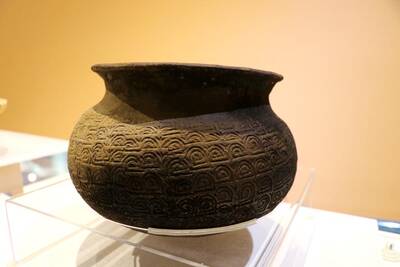
The People’s Republic of China (PRC) yesterday paraded its military hardware in an effort to impress its own population, intimidate its enemies and rewrite history. As always, this was paced by a blizzard of articles and commentaries in the media, a reminder that Beijing’s lies must be accompanied by a bodyguard of lies. A typical example is this piece by Zheng Wang (汪錚) of Seton Hall in the Diplomat. “In Taiwan, 2025 also marks 80 years since the island’s return to China at the end of the war — a historical milestone largely omitted in official commemorations.” The reason for its